
Imagem que se convencionou identificar com Saída Al-Hurra, mas que se trata da representação de uma heroína da independência grega, de nome Laskarina Bouboulina. Pintura patente no Museu Nacional de História de Atenas
Durante o último quartel do século XV Portugal ocupava as quatro cidades costeiras mais importantes do chamado trapézio do Norte de Marrocos, também conhecido pelos cronistas portugueses como Marrocos Verde _ Ceuta, Alcácer Ceguer, Arzila e Tânger.
A oposição à presença portuguesa na região não se inseria no quadro do conflito entre os Reinos de Portugal e de Fez, mas era feita de uma forma mais ou menos autónoma por um conjunto de alcaides, antigos nobres do derrotado Reino de Granada, que transportaram para Marrocos a guerra aos cristãos que os haviam expulsado da Península.
De entre estes destacou-se uma mulher, de nome Aicha, conhecida como Saída Al-Hurra, a Senhora Livre, que ficou na História como a grande opositora à ocupação portuguesa, alargando o âmbito da guerra ao invasor da simples guerrilha terrestre para a guerra no mar, conferindo-lhe um carácter mais alargado e estratégico, usando a diplomacia como arma e aproveitando os próprios rendimentos da guerra para promover o desenvolvimento da sua região.

Chefchauen
Nos tempos finais do Reino de Granada, cuja rendição ocorreu no ano de 1492, muitos andalusinos passam o Estreito de Gibraltar e fixam-se em Marrocos, sobretudo aqueles nobres que viviam nas zonas de fronteira desse reino. Uma nota pertinente: os arabistas portugueses preferem chamar a esta população andalusinos e não andaluses, já que é comum confundir-se a identidade Peninsular Árabe com a actual Andaluzia espanhola, erro grosseiro e de certa forma incentivado pelo nacionalismo andaluz, que nada tem a ver com a realidade histórica de que falamos.
Após a conquista de Arzila pelos portugueses em 1471, é assinado um acordo de paz entre os reinos de Portugal e de Fez, com a vigência de vinte anos. Esse acordo permitiu legitimar a posse portuguesa das quatro praças-fortes que ocupava na região e das aldeias do seu termo, e permitiu que o sultão de Fez, envolvido em lutas internas pelo poder, pudesse concentrar os seus esforços nas mesmas, beneficiando de alguma tranquilidade na fronteira com o Reino de Portugal.
No entanto, o acordo espelhava a autonomia dos nobres andalusinos, cuja actividade militar escapava ao controlo do sultão de Fez, prevendo no seu clausulado que “os lugares murados das duas partes, que eram da parte dos mouros Alcácer Quibir, Tetuão e Xexuão, poderiam continuar a fazer-se guerra, sem quebra do tratado”. (LOPES, [1937] 1989, p. 26)

A situação no “trapézio Norte” no século XV
Gozalbes Busto caracteriza deste modo a situação na época:
“Existia ali, durante toda a Idade Média mais do que um desenvolvimento urbano mediano em cidades como Ceuta e Tânger, que atingiram grande esplendor, junto com outras menos importantes como Alcácer Ceguer, Arzila, Tetuan, Alcácer Quibir ou Larache. Poucos anos depois do início do século XV essas cidades começam a cair em mãos lusitanas. Na segunda metade do século, só Alcácer Quibir e Larache permanecem em poder dos marroquinos.
O Islão africano sente-se ameaçado, mas em lugar de ser a própria dinastia reinante a centralizar e dirigir a resistência, fazem-no os chefes regionais, com ou sem acordo do governo central. Entre estes senhores da guerra que, em cada lugar, fazem frente ao invasor estrangeiro, sobressai o senhor da montanha do Norte, o nobre xerife do Jebel ‘Alam, Sidi ‘Ali ben Rashid, descendente do grande Polo místico do Ocidente, Sidi ‘Abd es Sellam ben Mashis, da linhagem directa do Profeta.” (GOZALBES BUSTO, 1988, p. 462)

Gibraltar
Sidi ‘Ali ben Rashid, Mawlay ‘Ali ben Rachid ou Mulay Ali Berrechid, todos estes nomes formas de designar a mesma pessoa, o Barraxe das crónicas portugueses, era assim um Chorfa ou Xerife (nome dado aos nobres descendentes do Profeta Muhammad) dos Alálames, designação que provém do nome do Jebel ‘Alam, ou Montanha ‘Alam, de onde era originário, que fora para o Al-Andalus fazer a guerra aos cristãos. Durante esse período terá conhecido uma cristã de Vejer de la Frontera de nome Catalina Fernandez, com quem se viria a casar, tendo Catalina feito a conversão ao Islão e mudado o nome para Zuhra ou Zahra.
Não é conhecida a forma como Berrechid conheceu Zuhra, como relata Gozalbes Busto:
“A forma como ocorreu o encontro ou conhecimento entre Ben Rashid e Zuhra é um facto que, até agora, permanece, como tantos outros, ignorado (…) que um tivera o seu ambiente natural no Norte de África e a outra na Andaluzia recém-conquistada não é obstáculo para o encontro entre o Xerife e a Vejeriana, já que sabemos que Sidi Ali ben Rashid esteve enquanto jovem na Península combatendo num dos grupos em luta. A favor dos cristãos, segundo Leão o Africano, e do lado muçulmano segundo Mármol”. (GOZALBES BUSTO, 1988, p. 463)
A afirmação de Leão o Africano é não só contraditória com o facto de as crónicas referirem que Berrechid foi para o Andalus combater os cristãos, como pelo próprio carácter nobre da sua linhagem muçulmana.

Chefchauen vista do Jebel Maggu
Berrechid terá regressado a Marrocos por volta de 1471, estabelecendo-se num acampamento militar situado nas Montanhas do Rif chamado Chuf Chauen, que significa Olha os Cornos, referência às duas montanhas que o ladeiam _ o Jebel Tissuka e o Jebel Maggu. O acampamento era uma base de mujahidins (guerrilheiros) que constituía a rectaguarda da luta contra os portugueses e que tinha sido estabelecido em 1417 por Abi Jumaa, primo de Berrechid. A morte de Abi Jumaa em combate contra os portugueses abre caminho à liderança do local por Berrechid, que sobre o acampamento funda a cidade de Chefchauen.
Berrechid mandou chamar Lalla Zuhra (Senhora Zuhra), que veio acompanhada do seu irmão Ali Fernandez. Não é claro se o casamento e a conversão de Lalla Zuhra, que os historiadores castelhanos chamam Lalazará Fernandez Elche, aconteceram em Chefchauen ou anteriormente em Vejer de la Frontera. Também em relação ao seu irmão, chamado originalmente Martin Fernandez, não se sabe se a sua conversão e mudança de nome para Ali Fernandez aconteceu em Marrocos ou no Al-Andalus. Ali é referido nas crónicas portuguesas com o nome Martinho Elche. A designação Elche tem origem no árabe Ilj, que era o nome dado aos cristãos que se convertiam ao Islão e a todos aqueles que mudam de religião. Martinho Elche seria nomeado alcaide de Jebel Habib, uma povoação nas imediações de Arzila. (GOZALBES BUSTO, 1988, p. 463)

Uma rua junto à Casbah de Chefchauen
A cidade que Berrechid funda é estruturada e guarnecida de muralhas com portas, tendo uma superfície de cerca de 40.000 m2 e uma população de 10.000 habitantes, dos quais 6.000 eram originários de Marrocos, 3.000 andalusinos e 1.000 judeus. (CHAUEN.INFO, página electrónica citada)
Um dos nobres granadinos que chega a Marrocos antes da queda do reino de Granada foi Abu Al Hassan ben Ali Al-Mandari, conhecido simplesmente por Sidi Ali Al-Mandari, o Almandarim das crónicas portuguesas, que se instala em Tetuan a partir de 1485 e reconstrói a cidade destruída pelos portugueses em 1437.

Tetuan vista de Ain Bouanen
Sidi Ali era amigo de Berrechid desde os tempos do Al-Andalus e juntos formaram o núcleo duro da guerra aos portugueses, a que se lhe juntaram o alcaide de Alcácer Quibir, Sidi Talha Al-Arous, o Cide Talha Larós das crónicas de Bernardo Rodrigues, e outros nobres andalusinos.
“As praças conquistadas pelos portugueses mantiveram-se num equilíbrio cómodo graças às suas tréguas, pazes e tributos com a envolvente, até que os senhores da guerra muçulmanos – como o granadino Sidi al-Mandri, em Tetuan, o seu sogro Mulay ‘Ali ibn Rashid, em Chefchauen – começaram uma ofensiva séria contra elas. O anterior empenho dos merínidas em passar por campeões do Islão, unido à atrofiada herança wattasi e à posterior debilidade saadi, foi o que potenciou e permitiu o fenómeno dos senhores da guerra e o avanço dos morabitos (…) Al-Mandri casou-se com Sayyida Al-Hurra, filha de Mulay ‘Ali ibn Rashid e de Lalla Zuhra, uma mudéjar de Vejer de la Frontera. Os três haveriam de ser os campeões da resistência no Norte, de forma quase independente do poder wattasi central.” (GIL GRIMAU, 2000, p. 313)

As muralhas de Arzila
Do casamento de Berrechid com Lalla Zuhra nasceram dois filhos. Um rapaz, chamado Mulay Ibrahim e uma rapariga supostamente chamada Aicha.
Mulay Ibrahim ben Mulay Ali ben Rachid foi considerado um verdadeiro príncipe do renascimento pela forma como exerceu o poder herdado de seu pai, chegando a ser valido ou protegido do sultão de Fez. Foi governador da região de Ghomara, sendo um personagem extremamente activo na chamada guerra das praças portuguesas. Segundo Carlos Pereda Roig, manteve com os portugueses um relacionamento bélico e ao mesmo tempo amistoso, sendo um diplomata nato. São inúmeros os relatos das suas incursões contra Arzila com os seus aliados, os alcaides de Alcácer Quibir, Tetuan e Jazém (Ouezzane). São também da sua iniciativa atitudes de conciliação e cortesia com o capitão de Arzila, que visitava frequentemente e com quem mantinha laços de amizade.

A frente de mar de Arzila
Muito interessantes são os relatos de Bernardo Rodrigues, morador de Arzila, sobre episódios envolvendo Mulay Ibrahim:
“O alcaide de Xexuão (Chefchauen), Mulei Abraém, usava de muita cortesia com o capitão de Arzila quando vinha contra a vila. Assim, acontecia que, depois de correr o campo da vila, mandava um mouro a cumprimentar o capitão, o conde do Redondo, e a beijar a mão da senhora condessa, pedindo-lhes desculpa do mal feito”. (RODRIGUES, [156-] 1915, p. 465)
Certa vez o mesmo Mulei Abraém veio atacar Arzila com o rei de Fez, mas o ataque não surtiu efeito, porque os portugueses estavam de sobreaviso. Após a partida do rei de Fez, o alcaide de Chefchauen quis cumprimentar pessoalmente o capitão da praça, D. João Coutinho, e encontraram-se os dois junto da vila. “Para comer e beber, a condessa mandou-lhes por seis pajens muitos bolos e água fresca, a que ele e a sua gente fizeram excelente acolhimento. Na véspera, a condessa fizera o mesmo a el-rei (de Fez), pedindo desculpa da pequenez da lembrança; a culpa era de el-rei que não tinha prevenido que vinha, mas esperava que de outra vez a avisasse e seria mais bem servido: da graça riu el-rei e, depois que Mulei Abraém comeu dos bolos, comeu ele também”. (RODRIGUES, [156-] 1915, pp. 465-466)
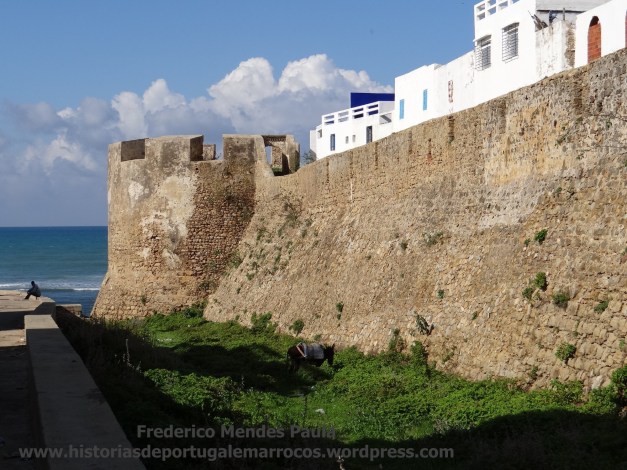
O pano Sul da muralha de Arzila
Situação também frequente eram as visitas do médico da Praça, Duarte Rodrigues, aos nobres mouros a pedido do capitão D. João Coutinho, como em 1530, ano em que foi a Chefchauen “tratar Mulei Abraém e sua mulher Leleaxa (Lalla Aicha), princesa real”. (RODRIGUES, [156-] 1915, pp. 176-177)
Bernardo Rodrigues relata uma visita que um grupo de cavaleiros mouros fez em redor da muralha de Arzila, expressando-se alguns deles em português e castelhano. Nessa ocasião Mulai Ibrahim pediu ao conde autorização para que os cavaleiros de Fez vissem a vila por fora, ao que o conde acedeu. “O conde disse logo que sim e, e, à nossa gente, postada no muro, que não lhes atirassem, porque vinham em som de paz e só movidos da curiosidade. Os primeiros que tomaram o caminho da praia não vinham muito afoutos, parecendo-lhes mais um sonho que verdade. Era, todavia, bem verdade, e, seguros que nenhuns perigos corriam, vieram em muito grande número, talvez mais de 4.000 de cavalo, e rodearam toda a vila a examinar o muro e a cava. Até alguns mouros mais atrevidos, que falavam português ou castelhano, vendo a janela dos aposentos da condessa e do Miradouro repletas de mulheres, que os observavam, puseram-se a gracejar com elas, modo muito peninsular de galanteio que o tempo não conseguiu fazer esquecer ainda”. (LOPES, 1925, pp. 272-279)

Chefchauen
Quanto a Aicha, que alguns autores defendem que o seu nome era um pseudónimo por ela adoptado, já que o seu nome verdadeiro seria Fátima, nasceu no ano de 1485. Casou por volta de 1500 com o amigo do pai e alcaide de Tetuan, Sidi Ali Al-Mandari, 30 ou 40 anos mais velho do que ela, ficando conhecida na História pelo nome de Saída Al-Hurra, a Senhora Livre. O termo hurra vem do árabe hurria ou liberdade e está na origem do português alforria, que era o acto de libertar um escravo e torná-lo homem livre. O seu nome é referido geralmente como As-Sayyida Al-Hurra, Saída Al-Horra, Sida al-Hurra, Sitt al-Horra e nas cronicas portuguesas Citalforra. Ou seja, na maior parte das referências que lhe são feitas o nome Aicha nem sequer figura. Quanto às várias formas de escrever o seu título, resultam todas do árabe السيدة الحرة, escrito com as consoantes ALSIDA ALHRA, e correspondem apenas a formas diversas de transcrição fonética. Nalguns textos o seu nome também aparece escrito como Lalla Al-Hurra.
Mouna Hachim refere que “as fontes são mudas em relação a toda a sua infância. Mesmo o seu prenome não recolhe a unanimidade, sendo tanto Fátima, como Aicha, mas impondo para todos o título de Sitt Al-Hurra, literalmente a Dama Livre (…) no que se refere a esse título, Al-Hurra, alguns autores assimilam-no à liberdade da sua condição, enquanto outros vêm nele uma parte do seu próprio nome, figurando enquanto parte do seu acto de casamento, inspirado provavelmente na célebre figura epónima da rainha de Granada”. (HACHIM, 2010, página electrónica citada)

A Mesquita de Chefchauen na Praça Uta Al Hammam
Gil Grimau comenta também a suposta adopção do nome Aicha desta forma:
“O nome próprio de Aicha, que às vezes se lhe atribui, pode ter origem numa identificação da nossa Sitt al-Hurra com outra piedosa e Nobre Dama desse nome e tempo, que foi a mãe do cronista Ibn Ashkar. O pai da nossa (Gil Grimau refere-se a Mulay Ali Berrechid), que seguramente tinha combatido nas últimas guerras de Granada a favor ou contra os reinos cristãos peninsulares, tinha-se convertido num príncipe praticamente independente dos wattassíes de Fez, formando um mini-estado em Beni ‘Arus, Beni Husmar e Jebala, com capital em Chauen, cidade que fundou povoando-a com gente da comarca e com andalusinos, especialmente os emigrados granadinos, que escapavam aos avanços dos Reis Católicos.” (GIL GRIMAU, 2000, p. 314)
Segundo as fontes árabes, Aicha era dotada de grande inteligência e teve uma educação excepcional, tendo sido formada pelos grandes mestres e sábios do seu tempo.

O Jebel Tissuka em Chefchauen
A própria identidade do seu marido não é consensual, mas a generalidade dos autores consultados, como Enrique Gozalbes Cravioto e Rodolfo Gil Grimau, referem ser Sidi Ali Al-Mandari, o reconstrutor de Tetuan e companheiro de armas de Mulay Ali Berrechid, com quem inclusivamente combatera em Granada, e que lhe prometeu a sua filha Aicha em casamento quando esta ainda era criança. Esta posição é baseada nos textos dos cronistas da época, como Abderrahim Yebbur Ouddi e Muhammad Ibn Azuzz, e reforçada pelas referências feitas ao facto de Saída Al-Hurra ter exercido o poder ainda em vida do seu marido devido à sua avançada idade e debilidade, inclusivamente cegueira. No entanto, alguns autores como Muhammad Dawd defendem que o marido de Aicha era o neto de Sidi Ali Al-Mandari, Mohamed.
A conjuntura política do final do século XV é marcada pela apetência de vários blocos pelo território marroquino, seja o otomano, o espanhol e o português, sem que nenhum deles consiga de facto conquistar o país. “E é aqui que entra a figura de Sayyida al-Hurra como a de um dos protagonistas da resistência e da mistura de culturas da época, e suas formas de actuar.” (GIL GRIMAU, 2000, p. 314)

A Medina de Tetuan
Não existe informação disponível sobre o papel de Aicha durante os primeiros 10 anos do seu casamento, mas sabemos que a partir de 1510 o estado de saúde de Sidi Ali era bastante precário.
Gozalbes Cravioto escreve a propósito de Sidi Ali Al-Mandari que “nas últimas décadas da sua vida, com o governo exercido em boa parte por Sita al-Hurra (sua esposa), a imigração constante de mouriscos do antigo Reino de Granada, e a prosperidade das actividades corsárias, produzirá um notável aumento da população (de Tetuan)” (GOZALBES CRAVIOTO, 2012, p. 294)
Gil Grimau refere que “é possível, no entanto, que não tenha tomado a cargo o poder em 1510-1512, em nome de seu marido, mas que tenha havido uma partilha de funções, de alguma forma: o governo interno da cidade para ela e o campo de batalha para ele, até que o guerreiro se vê obrigado a ficar em casa por volta de 1520.” (GRIMAU, 2000, pp. 315-316)

Ain Bouanen e Tetuan
Por essa altura uma filha do casal casa-se com um filho de Hassan Haxim, um outro nobre procedente da cidade granadina de Baza, de nome Ahmed, em quem Saída Al-Hurra se apoio frequentemente no governo da cidade, homem que seria fatal para o futuro de Aicha, como adiante se verá.
Gozalbes Busto fala da longevidade de Sidi Ali, que foi alcaide do Castelo de Pinhar no Al-Andalus até 1485, data em que se instalou em Marrocos e reconstruiu Tetuan, e que em 1540 ainda governava essa cidade:
“Devia ser muito jovem quando desempenhou a alcaldia de Piñar, já que em 1540 ainda estava vivo à frente dos destinos de Tetuan apesar de, na realidade, quem governava a cidade era a sua mulher a Xarifa ‘Alami Sit al-Hurra, filha do fundador de Xauen Sidi ‘Ali ben Rashid.” (GOZALBES BUSTO, 1986, p. 144)
Como vimos, o ano de 1520 marca o momento em que Sidi Ali Al-Madari se retira efectivamente das actividdes relacionadas com a sua posição de alcaide de Tetuan, mas o seu prestígio e o facto de Sayida Al-Hurra ser uma presença constante nas suas aparições públicas, permitirão que a sua mulher tome o seu lugar de forma pacífica.

A fortaleza de Targa
Assim, a partir de 1520 Aicha começa ela própria a dirigir os destinos de Tetuan e dos portos que dela dependiam _ Marsa Tetuan (actual Martil), Larache e Targa, que transforma em poderosas bases corsárias, iniciando uma guerra sem tréguas no mar contra os portugueses. Esta guerra no mar alarga o âmbito da guerra terrestre em torno das praças e tem como objectivo raids, não só contra as próprias praças, como ataques aos navios que as abastecem e às frotas portuguesas que fazem a rota da costa africana, e inclusivamente ataques às povoações costeiras da Península para a captura de populações.
O aumento da actividade corsária que Aicha promove é acompanhado do estabelecimento de um acordo com os irmãos Barbarossa, Bábá Aroudj (Papá Aroudj) e Khayr Ad-Din, com quem partilha o Mediterrâneo, ficando senhora do Mediterrâneo Ocidental e do Golfo de Cadiz.

Os irmãos Barbarossa, Bábá Aroudj e Khayr Ad-Din. Origem desconhecida
A actividade dos irmãos Barbarossa preocupava tanto a coroa portuguesa como a espanhola. No ano de 1517 a frota de Aroudj Barbarossa encontra-se sediada em Larache. Larache era um porto seguro para o corso da berbéria, onde os navios eram abastecidos e reparados. A importância estratégica deste porto está patente na afirmação de Felipe II de Espanha, quando diz que “a cidade de Larache valia mais sozinha que toda a Africa”.
“Em 1517 o célebre corsário turco Barba Roxa percorre o Estreito com catorze navios de remos. Contra esta armada envia o Rei de Castela uma poderosa frota que no entanto não consegue capturar o famoso pirata turco. Este divide os navios, indo parte para Larache e outra para Argel. A intervenção espanhola e esta fuga para Larache vão assumir uma importância fundamental no desenrolar da actividade marítima da região. A primeira vem dar consistência às crescentes preocupações dos monarcas espanhóis para com a segurança das suas costas. O segundo facto transformou Larache num grande porto de piratas que em muito prejudicaram as ligações de Portugal com o Norte de África. Toda esta actividade corsária terá sido um dos motivos que levou D. Manuel a prover esta região com uma armada permanente. É a partir da sua criação oficial, em 1520, que a actividade naval portuguesa toma foros mais consistentes.” (GODINHO, 1998, p. 122)

O Castelo das Cúpulas em Larache, guardião da barra do Rio Lucos
Com as suas esquadras de fustas e xavecos, As-Sayyida Al-Hurra torna-se uma corsária temida e o negócio do resgate de cativos origina lucros fabulosos e uma riqueza enorme para Tetuan. Este negócio só era possível acompanhado de uma actividade diplomática intensa, que permitisse a acção dos alfaqueques e a intervenção directa das autoridades das duas partes, que estabeleciam as regras, preços e concediam as respectivas autorizações, utilizando geralmente intermediários judeus para efectivar os pagamentos, que chegavam a cobrar 20% do valor dos regates. (EL JETTI, 2013, p. 5)
As Masmorras de Tetuan eram o destino da grande maioria dos cativos da guerra do corso e da guerra feita em redor das praças do Norte de Marrocos. Foram criadas num complexo subterrâneo formado por um conjunto de grutas naturais situado por baixo do Monte Dersa, onde assenta a Medina e o Ensanche da cidade. Conhecidas pelo nome de Mtamar, termo Árabe que significa lugar de enterramento, as Masmorras são de tal forma extensas e labirínticas que não se conhece a direcção e extensão das suas galerias. (BENABOUD, 2010, obra citada)
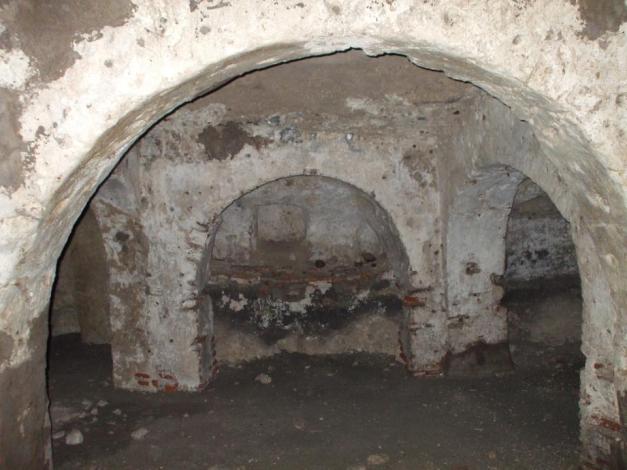
As Masmorras de Tetuan. foto Mhammad Benaboud
Os acessos ao seu interior encontram-se actualmente encerrados. A origem das Masmorras de Tetuan remonta aos finais do séc. XV e inícios do séc. XVI, quando Sidi Ali Al-Mandari e os refugiados de Granada se instalaram na cidade, assumindo um papel importante como principal lugar de concentração e venda dos cativos ibéricos nos séc. XVI e XVII. “Das actividades bélicas e comerciais dos primeiros habitantes de Tetuan do século XVI nasceu um importante mercado de escravos. Neste contexto, as masmorras deram origem a um serviço público necessário que formou parte do sistema económico da cidade.” (BENABOUD, 2010, página electrónica citada)
De acordo com Mhammad Benaboud, “as masmorras existiam antes da chegada de Ali Al Mandari como uma rede de grutas subterrâneas naturais. Foram criadas provavelmente porque existem fontes de água subterrâneas em diferentes partes da cidade de Tetuan (…) estas grutas tomaram outro significado a partir da reconstrução de Tetuan pelo seu fundador (…) no início do século XVI, as masmorras foram utilizadas para outros fins como por exemplo, armazéns de trigo, mas sobretudo, pelo menos uma parte da rede foi utilizada como prisão subterrânea”. (CORRALES, 2015, página electrónica citada)

As Alpujarras em Granada
A viabilidade do governo de Sayida Al-Hurra em Tetuan não dependia apenas da legitimidade e apoio dado por Sidi Ali Al-Mandari, e claro, do seu próprio génio político e diplomático.
O apoio do seu irmão Mulay Ibrahim, valido do sultão de Fez desde 1527 e residente na sua corte, é fundamental para o poder de Aicha em Tetuan, já que representa a legitimação oficial, por parte do Reino de Fez, do seu papel enquanto a verdadeira Hakima (governadora) de Tetuan e garantia de que os seus inimigos ficavam arredados de qualquer tentativa de a hostilizar.
“Mulai Ibrahim desde Fez governava o país e acumulava poder regendo o feudo do Norte através da sua irmã e do fantasma heroico do seu cunhado.” (GOZALBES BUSTO, 1988, p. 469)
Mulay Ibrahim inclusivamente trata Aicha como a governadora oficial de Tetuan, como prova uma ordem que dá para que “um prisioneiro de guerra seja levado a Tetuan para entrega-lo a Citalforra, alcaldesa e senhora da dita cidade.” (GOZALBES BUSTO, 1988, p. 471)

As muralhas de Tetuan
“Por esta altura Sitt al-Hurra estava na plenitude da sua vida e certamente das suas faculdades físicas e psíquicas. Já tinha larga experiência de governo de uma comunidade e ninguém podia fazer-lhe sombra ou opor-se seriamente, já que governava em nome do seu marido e com o apoio do seu irmão.” (GOZALBES BUSTO, 1988, p. 471)
A morte de Mulay Ibrahim em 1439 é um rude golpe para Aicha, tanto politicamente como afectivamente. Sidi Ali morre em 1540 mas “o prestígio de Al-Mandari foi tão grande, tanto o adquirido na sua juventude granadina, como o acrescentado na sua maturidade africana, que permitiu à sua esposa marroquina, Sit al-Hurra, governar sozinha a cidade durante pouco mais de um ano depois de enviuvar.” (GOZALBES BUSTO, 1986, p. 145)
Durante esse ano que governa sem apoios, as ameaças começam a sentir-se, do lado de adversários políticos, mas sobretudo de familiares, como é o caso do seu tio Mohamed, irmão do seu pai, do seu meio-irmão Hassan ou do seu genro Ahmed Hassan, “mas ao casar-se em Junho de 1541 com o sultão, afasta evidentemente as ameaças e maneja à sua vontade os assuntos da região”. (GOZALBES BUSTO, 1988, p. 470)
O casamento com o sultão de Fez Ahmed Al-Wattasi é assim um casamento de conveniência. “Um casamento político cuja cerimónia decorre, contrariamente a todas as tradições, em Tetuan e não na capital real Fez. É aliás em Tetuan que ela continua a residir, encarregue pelo seu esposo das relações com os Portugueses.” (HACHIM, 2010, página electrónica citada)

O Forte do Desnarigado em Ceuta
O apoio de Sayida Al-Hurra ao corso acabaria por originar uma rotura diplomática com o governador de Ceuta, que fechou o porto da cidade aos produtos oriundos de Tetuan, facto que criou um grande mau estar entre os comerciantes da cidade.
“No dia 22 de Outubro de 1542, Hassan Haxim, o ‘compadre’ de Sayyida al-Hurra, vindo de Fez com um grupo de ginetes, e em conivência com o seu filho Ahmed, e as facções contrárias à governadora, entrou em Tetuan e fez um golpe de estado destituindo Sayyida al-Hurra, expulsando-a da cidade e confiscando-lhe os bens.” (GRIMAU, 2000, p. 318)
Os contornos do golpe de estado, que colocou no governo da cidade Ahmed, não são claros, mas Gozalbes Busto defende que se tratou de um golpe palaciano familiar, e não com origem numa oposição política organizada, já que decorreu de forma demasiado fácil, sem que ninguém a defendesse, nem o próprio sultão, seu marido. (GOZALBES BUSTO, 1988, p. 478)

Uma habitação em Chefchauen
Aicha acabou os seus dias em Chefchauen, de forma solitária e amarga, na cidade então governada pelo seu meio irmão Muhamad, que segundo consta, nem a odiava, nem lhe queria bem. Não se sabe em que ano morreu.
“Não sabemos nada de Sitt al-Hurra, mas o seu destino teve de ser bastante amargo e doloroso.” (GOZALBES BUSTO, 1988, p. 479)
Após a sua morte, o corpo de Aicha As-Sayyida Al-Hurra Bint Banu Rashid Al-Mandari Al-Wattasi, Hakima Tetuan, foi depositado na Zauia Raissunyyia, onde era particularmente visitado por mulheres. Diz-se que um seu neto trasladou o corpo para outro local, fora da cidade, para mais facilmente a votar ao esquecimento.
“Assim se acaba este breve retrato de uma figura emblemática que dirigiu temporariamente homens e levou a cabo operações jihadistas relevantes do domínio espiritual, abrindo uma brecha na imagem fantasmagórica criada sobre a mulher muçulmana e afirmando o seu papel no edifício civilizacional.” (HACHIM, 2010, página electrónica citada)

Placa toponímica da rua principal da Medina de Chefchauen, ligando a Bab Al-‘Ain à Praça Uta El Hammam
Para Gil Grimau, o destino de Aicha é indissociável da época de transformações e re-equilíbrios em que viveu, de grandes instabilidades, em que não era fácil ser um protagonista de liderança, sobretudo mulher, numa sociedade governada por homens. Mulher culta e sedenta de justiça, assumiu o seu destino e foi capaz de o gerir enquanto teve o apoio do pai, do irmão e do marido.
“Não devia ser uma mulher altiva, apesar de convencida de poder superar todos, pelo que acabou pecando por excesso de confiança. E, como tal, é possível que tenha acreditado muito em si própria, sendo também uma boa crente em Deus, que teve de aceitar, sobretudo na etapa silenciosa e última da sua vida, o que o Altíssimo lhe foi dando.” (GRIMAU, 2000, pp. 319-320)











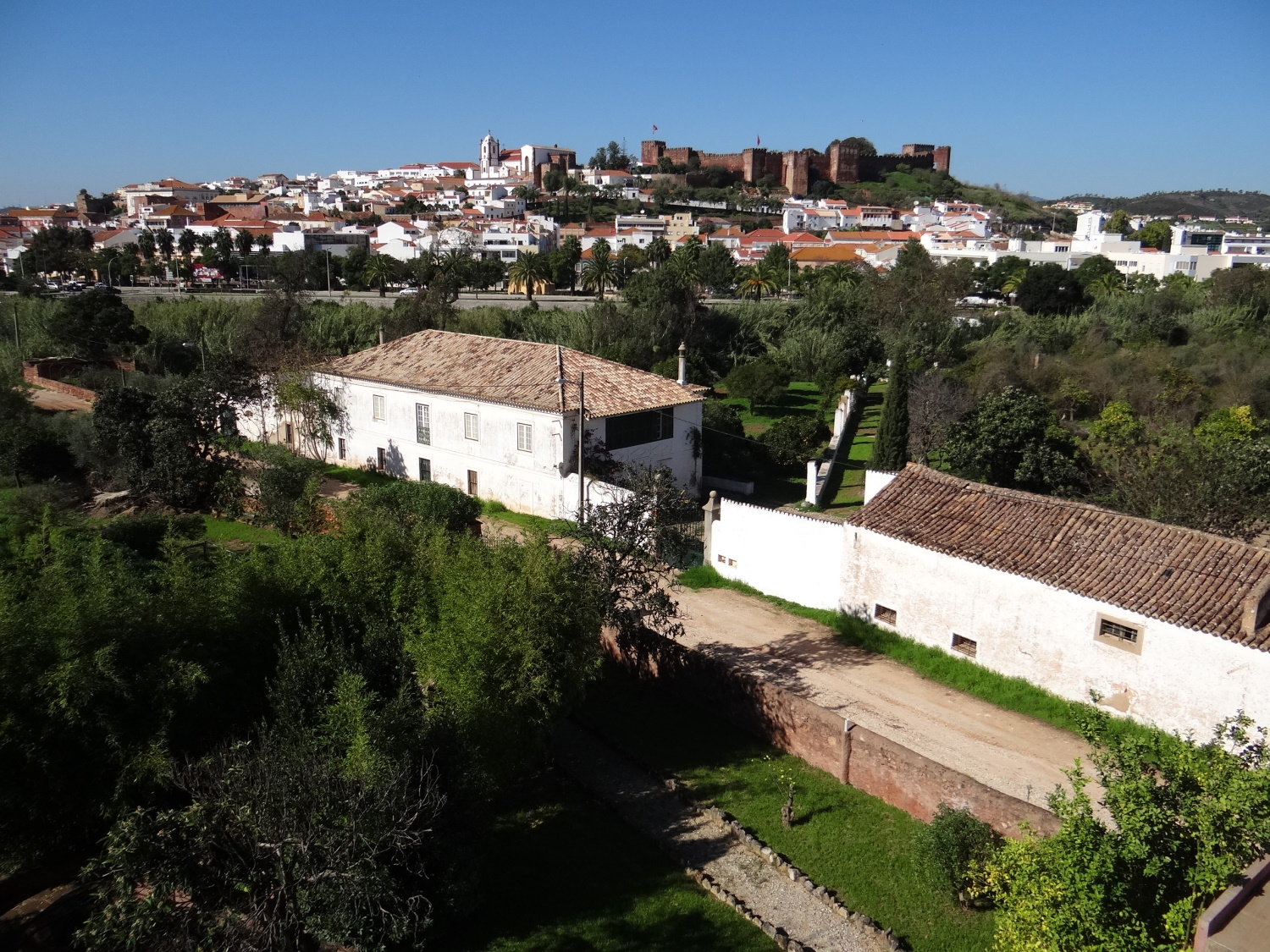





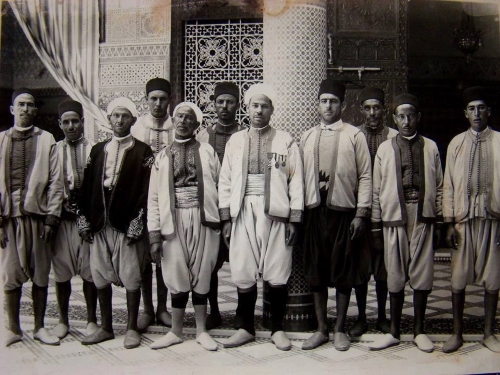









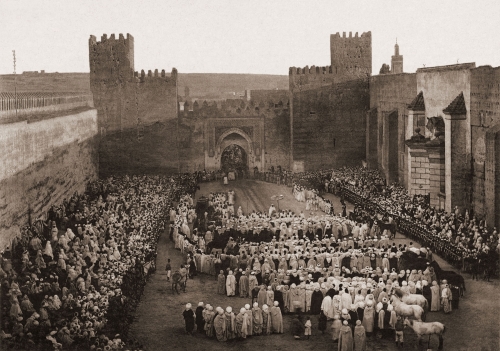














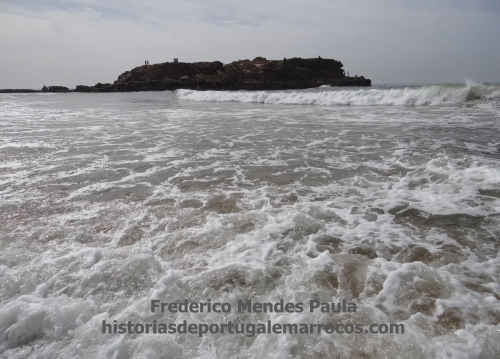

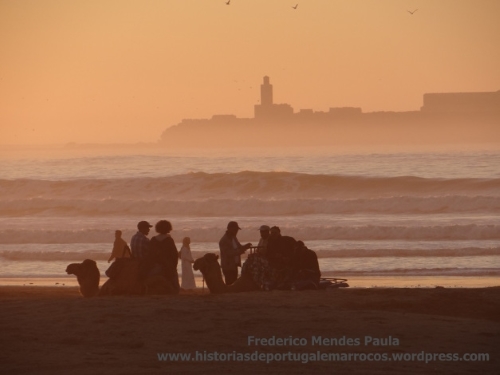



















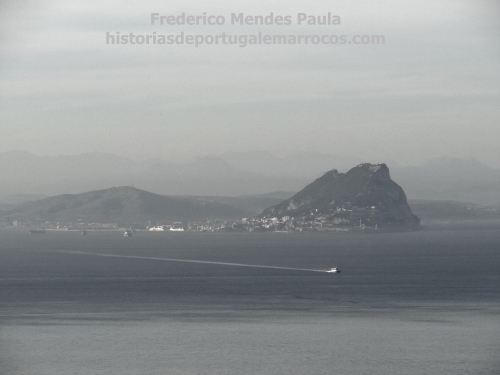


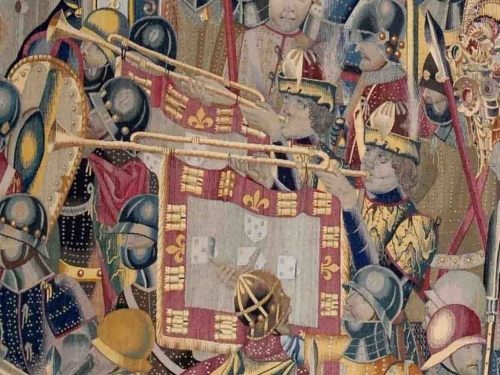












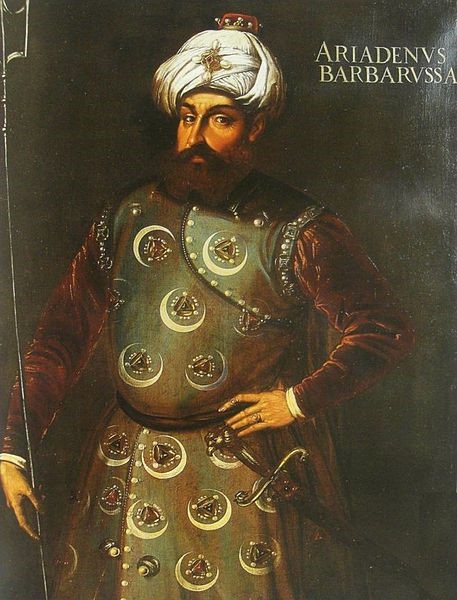




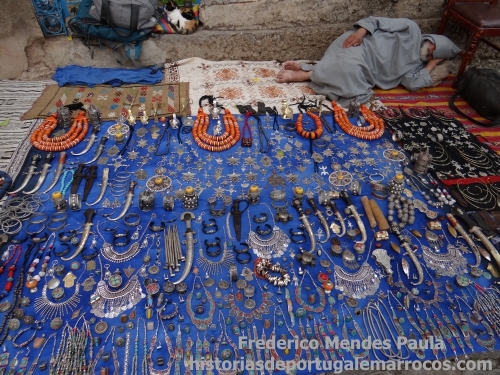































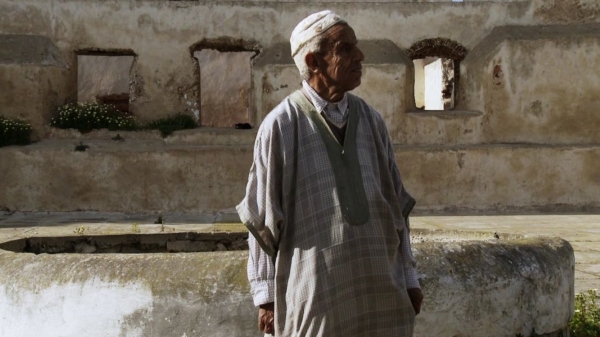

































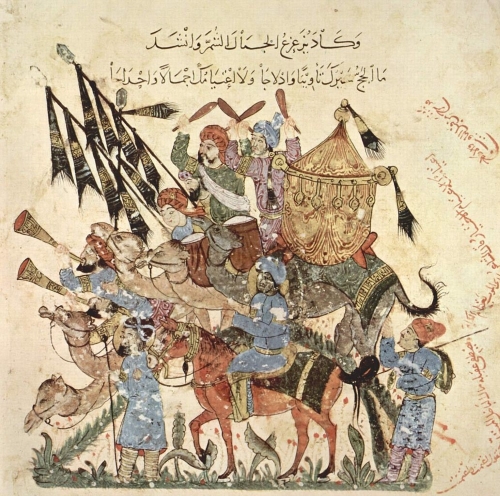















Caro amigo Frederico Mendes Paula,
Tenho um livro da casa de Fez e seus antepassados, vou lhe facultar este registo que vale muito mais que as bíblias sagradas existentes. Mostra de onde veio os Corsários, os reis de Fez e de Marrocos.
Existem dúvidas existenciais sobre o Barba Roxa, dos corsários de onde vieram, eu possuo um livro de Pierre Dan, aconselho a ler, Corsaires de Barbarie, héritiers de la malédiction & de la terre de Chá.
Que s’ilne tenoit qu’à recouriraux exemples, pour prouuer l’anv- tiquité de ces illustres voleurs, nous en trouuerions de reste dans Cor Fakecs uragcs des Grecs: Mais ie me contenteray de rapporter à cc cicm. propos ce quiaduint au grand Alexandre. Comme ce Monarque voguoit vn iour fur la mer aucc vnc puissante flotte, il rencontra fortuitement vn Corsaire,nommé Dionides chargé du butin de plusieurs vaisseaux qu’il auoit ptis.
É necessário dar registos com alguma credibilidade e o seu site é um livro aberto, os registos da republica e estado novo (não são credíveis isto é a minha opinião), por causa que estes investigadores não vão procurar nas fontes e supõe que seja assim, não pode ser.
Deixo lhe este link e faça a sua pesquisa dentro de registos das épocas.
https://books.google.pt/books?id=RTXCG2JVjC0C&pg=PA11&focus=viewport&hl=pt-PT&output=text#c_top
Pierre Dan – 1649 – Alger Royaume en quelle region est situé. pa. 6. Pourquoy il se trouue aujourd’huy plusgrand nombre de Corsaires en Alger, qu’cn tous les autres lieux de la Barbarie. Pag. 23.24. En quel temps ceste Ville a esté veuë la principale de la .
Existe ainda outra situação, Portugal e França, juntaram se ao rei da Bohémia para poder passar o Jacob rei de Marrocos para as terras da Bohémia que era Marrocos. Porque antes da ordem de São João filho primogénito de D. Dinis existir a Bohémia pelos Vikings tomaram Marrocos, isto na altura de Rollo, primeiro rei de Inglaterra.
Este Rollo, tem um sobrenome igual a Saxe, a Hesse, igual e continuo a bater na mesma tecla que o sangue dos Vikings desde 160 de Kvenland na actual Finlandia, são parentes a Carlos Magno e anterior. Isto para outras conversas.
Cumprimentos
Obrigado
Caro amigo Frederico Mendes Paula
Deixo lhe aqui mais uma prova de um livro com cartas de forais de Rollo e tenho a linhagem completa de Eduardo III de Inglaterra com o meu sobrenome Felgariis ou Filgeriis, até Kvenland em 160 na actual Finlandia, mas isto é para outra altura, a família era muito grande e tudo interligado.
The History of Normandy and of England Till 1101, Volume 1
Por Francis Palgrave
GENERAL RELATIONS OF MEDIEVAL EUROPE ; THE CARLOVINGIAN EMPIRE-THE DANISH EXPEDITIONS IN THE GAULS-AND THE ESTABLISHMENT OF ROLLO.
Narratione uutem historica (ait Augustimu) cum prmterita etium hominum instituta. narrantur, non inter humane. institnta. ipaa historia numeranda. eat; quia jam quaa tmnsieruut, nee infects. fieri posaunt, in ordine temporum habenda aunt, quorum eat conditor at administrator Deus.
§ 3. Far more destructive during the hateful succession of divisions and jealousies, feuds, frauds and treacheries, were the Saracens and the N orthmen, hacking and hewing, cutting and carving, making their partitions also, here with Danish battle-axe, there with Damascus blade.
The Saracen expeditions continued the formidable warfare by which they had won the Iberian peninsula, and previously assailed the Gauls. Nothing daunted by the defeats received from Charles-Martel, they treated the Aqui- 840-877 tanian and Narbonensic Gauls as a country to , which they possessed a natural claim: in sultry 714-900
Saracen Provence you feel to breathe the Zahara air. 881
The Aquitanians were well inclined to fraternize g’f’i’tfel’lgd with the Mahometans. No thanks either to Adalgisius and Adalferius and the Beneventine Lombards, that the Carlovingian Emperor had not been supplanted by a Sultan of Naples, whose Emirs would have extended their conquests round to the realm of the Ommiades. Antioch, Alexandria, Jerusalem, bowed humbly before the Arab, and it seemed more than once uncertain I whether Rome would not be equally reduced to servitude. The Western Pontifl’ was threatened by the captivity inflicted upon the oriental Patriarchs: Saint Peter’s successor might groan in bondage, like the successors of Saint Ignatius, Saint James or Saint Mark. The great Mediterranean lake appeared destined to become a Moslem lake; and why not? An Emperor of Morocco, according to the reasoning so irrefutable when supported by the arguments of civilization, would have as good a right as an Emperor of France. Few early Provencal or Aquitanian Chronicles have been preserved, consequently the history of the country is very obscure. We have evidence however that the Saracens came over in great numbers. Their attacks and partial successes are not unfrequently noticed, but the….
…larger and more continuous immigrations are only incidentally recorded. Fraxinet, a castle or fortress on the coast, somewhere nigh Fréjus, became the nucleus of a Saracen colony midway between Italy and Spain, and readily reached from Africa. This position offered great advantages. The Saracens expanded themselves over the country. They mastered the passes of the Cottian and Penine Alps, following the footsteps of Hannibal. Various localities have received their denomination from these invaders. The forét des Maures on the Fréjus coast, PuyMaura, and Mont-Alaure near Gap, the Col de Maure near Chateau Dauphin, and the whole County of Maurienne, testify their occupancy; and it is considered that the Saracen blood has left deep traces in the aspect as well as the character of the Provencals.
With the Saracens probably came also a large proportion of Jews, who subsequently acquired considerable influence, rivalling their Spanish brethren, the Sephardim, in literature and intellectual cultivation. But the Moslems were as much at variance amongst themselves as the Christians :—a divided Caliphate in the presence of a divided Empire. The Musnud of Bagdad has fallen like the Throne of Aix-la-Chapelle
ROBERT Giffard (-after 1129). “Radulfus Filgeriensis and Henry de Felgeriis
GUILLAUME – WILLIAM I RAGNVALDSSON De Normandy;
RICHARD SANS PEUR – ‘The earless’ Duke of Normandy;
RICHARD II SANS PEUR, ‘The Good’; ROBERT SANS PEUR (PEUEREL);
HENRY I BEAUCLERK ap William the Conqueror By the Grace of God,King of the English and Duke of the Normans
Cumprimentos
Caro Frederico Mendes Paula, a propósito da Senhora Livre As-Sayyida Al-Hurra, deixo esta curiosa “coincidência” vinda da Grécia profunda. Uma questão a desvendar…
https://en.wikipedia.org/wiki/Laskarina_Bouboulina
Congratulo-me pela qualidade deste blogue, didático, informativo, sério.
Um abraço
PCR
Caro Pedro Caldeira Rodrigues
A propósito da Sayyida Al-Hurra, uma coisa parece ter ficado clara e que era um mistério para mim. A imagem não é dela e está no Museu Nacional de História de Atenas. Quanto à personagem em si foi bem real, como as crónicas o demonstram. Obrigado pelo contributo.
Abraço